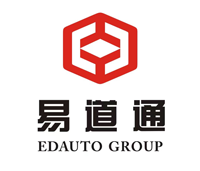As we enter 2025, the automotive industry is at a critical juncture, with transformative trends and innovations reshaping the market landscape. Among them, the booming new energy vehicles have become the cornerstone of the automotive market transformation. In January alone, the retail sales of new energy passenger vehicles reached a staggering 744,000 units, and the penetration rate soared to 41.5%. Consumers’ acceptance of new energy vehicles is constantly improving. This is not a flash in the pan, but a profound change in consumer preferences and industry landscape.
The advantages of new energy vehicles are manifold. First, new energy vehicles are designed with sustainability in mind, with significantly lower carbon emissions than traditional internal combustion engine vehicles. As global awareness of climate change grows, consumers are increasingly inclined to make environmentally friendly choices. The shift to electric and hybrid vehicles not only helps improve the environment, but also complies with government policies aimed at reducing pollution and promoting green energy. The alignment of consumer values and policy initiatives has created fertile soil for the development of new energy vehicles.
In addition, technological advances have effectively addressed many of the initial concerns people had about electric vehicles, especially those related to battery life and charging infrastructure. Continuous improvements in battery technology have resulted in longer driving ranges and faster charging times, alleviating the concerns that many potential buyers once had. As a result, the forecast for new energy passenger vehicle retail sales is relatively optimistic, with sales expected to reach 13.3 million units by the end of 2025, and the penetration rate could rise to 57%. This growth trajectory shows that the market is not only expanding, but also maturing.
The “old for new” policy implemented in various places has further stimulated consumers’ enthusiasm for replacing new energy vehicles. This initiative not only encourages consumers to replace their cars, but also promotes the overall growth of the new energy vehicle market. As more and more consumers enjoy the dividends brought by these policies, the demand for new energy vehicles is expected to increase significantly, thus creating a good market environment that is beneficial to manufacturers and consumers.
In addition to environmental protection and technological advantages, the rise of domestic brands in the automotive field is also worth noting. In January, the wholesale market share of domestic brand passenger cars exceeded 68%, and the retail market share reached 61%. Leading automakers such as BYD, Geely, and Chery have not only consolidated their domestic market position, but also made great progress in the international market. In January, domestic brands exported 328,000 vehicles, among which BYD’s overseas passenger car sales increased by 83.4% year-on-year, an astonishing increase. This significant growth highlights the continuous improvement of the competitiveness of domestic brands in the global market.
In addition, people’s perception of domestic brands is also evolving, especially in the high-end market. The proportion of models priced above 200,000 yuan has increased from 32% to 37% in just one year, indicating that consumers’ attitudes towards domestic brands are changing. As these brands continue to innovate and enhance their value proposition, they are gradually breaking the stereotypes of domestic brands and becoming a reliable alternative to mature international brands.
The wave of smart technology sweeping the automotive industry is another compelling reason to consider new energy vehicles. Innovative technologies such as artificial intelligence and autonomous driving are becoming an integral part of the driving experience. Smart cockpits that can adjust according to the driver’s mood and state, as well as advanced autonomous driving assistance systems, are improving safety and convenience. These technological advances not only enhance the overall driving experience, but also attract a wider range of consumers, especially among technology enthusiasts who prioritize innovation in their purchasing decisions.
However, it must be acknowledged that the road ahead is not without challenges. Global economic uncertainty and fluctuations in raw material prices pose huge risks to the automotive market. Nevertheless, the overall outlook for the automotive industry in 2025 remains optimistic. With the continued rise of independent brands, the rapid development of new energy vehicles, and continued technological innovation, the Chinese automotive market is expected to achieve another success and shine on the global stage.
All in all, the benefits of NEVs are clear and compelling. From environmental benefits to technological innovations that enhance the driving experience, NEVs represent the future of the automotive industry. As consumers, we must embrace this shift and consider purchasing NEVs. In doing so, we will not only contribute to a sustainable future, but also support the development of a dynamic and innovative industry that will redefine mobility in the years to come.
Email:edautogroup@hotmail.com
Phone / WhatsApp:+8613299020000
Post time: May-09-2025




